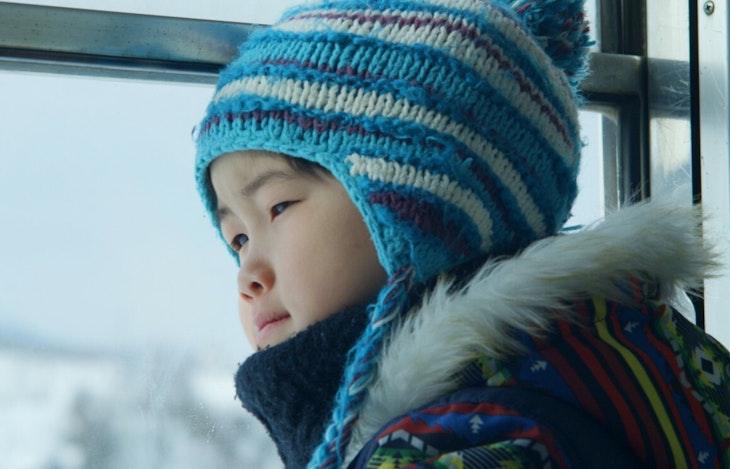Young Critics: 'La Nuit où j’ai nagé' door Susana Bessa

“A film is born of direct observation of life”, Tarkovsky said. If anyone were to try to define the poetry of cinema, they’d probably quote this phrase, which hints at how Igarashi and Manivel’s cine-poem/naturalistic reverie looks for such wisdom in the small scale of a city, - blocks of houses resemble matte brown and beige Legos, and delightfully contrast with fluorescent road signs -, wherein a young Japanese boy, who gets distracted on his way to school, strays off the correct path and ends up going on an adventure the rest of the day to track down his father at the fish market. This is a world of miniature paraphernalia, stove heated sweaters and socks and backpacks, but also of movements intertwined and composed with concern for verse and meter. All frames are similar, yet all are needed, much like in a flipbook.
From his penguin-like waddling to the plunging of his small winter boots into the snow, young actor Takara Kogawa conducts the ultra-realist depiction of human behavior with undeniable charm, whilst the scaling of narrative widens our sensorial need to look for the construction of mood in this sweet representation of innocence. The film is rooted in a kind of tender subtlety that glimpses at the human condition with enough curiosity for the audience to find inspiration in its gesture.
Divided in three different chapters, the film delves deep into a conversation about family and the intricacies of the rhythms of life. The way the boy runs to cross the street or how he only decides to board the train when it is about to leave the station, speaks for itself. There is an inherent vulnerability in his lonesome self-awareness when forced to deal with the sheer fact that he knows he doesn’t know how to live in the big people’s world. That said, and this being the representation of a musical note extended to its limit, La Nuit où j’ai nagé saves its true trump card for later, when the strength of the bond between a son and a father is confirmed in the same way it would in one of Raymond Carver’s short tales of everydayness. Only by shaking things up, as in the case of a snow globe, can movement be provoked and sentiment brought to the foreground. Kohei Igarashi and Damien Manivel know how vital this meditation is. By the end of the film, the silence of emotionality lingers in the mind, with the film’s poetic allure supporting the landing.